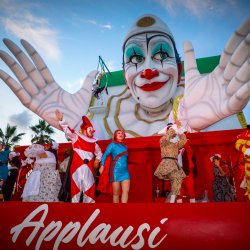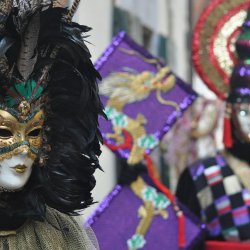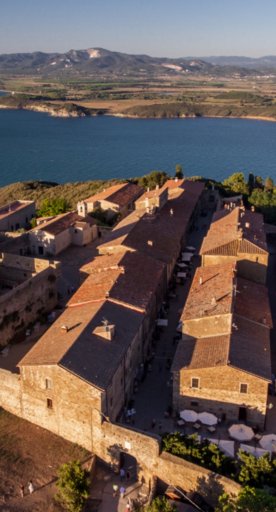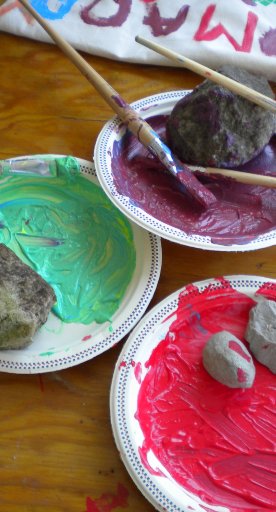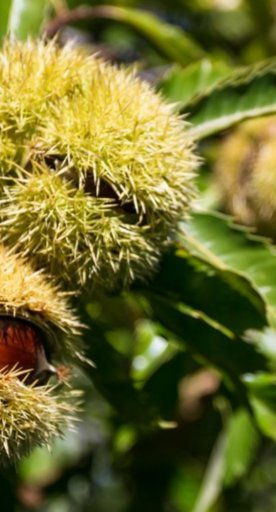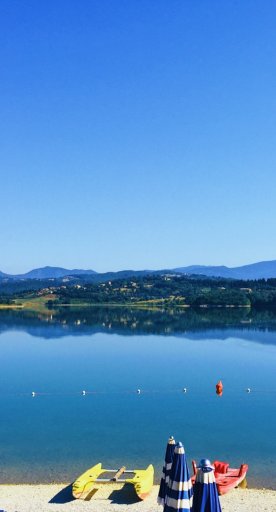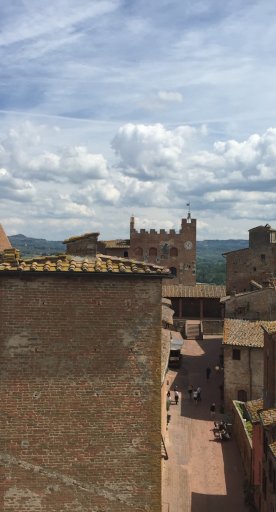

Livorno Aquarium: sharks, turtles and other wonders of nature
Let's explore Livorno with the family
Livorno is the city of cacciucco (fish stew), the port and the Medici canals, Modigliani and Piero Ciampi, the Mascagni terrace and the Ovosodo neighborhood made famous in a film by Livorno-born director Paolo Virzì.
In recent years it has been rediscovering its tourism vocation, though few consider it a family-friendly destination.
Nevertheless, it offers various options for people traveling with children, especially the beautiful aquarium on the waterfront within the panoramic Mascagni Terrace: 33 exhibition tanks, the tunnel with eagle rays, the touch tank and the new path with insects, reptiles and amphibians located on the second floor.
-
1.The reptile house
-
2.Ground floor
-
3.Diacinto Cestoni Room
-
4.Jellyfish and plastic
-
5.Mascagni Terrace
The reptile house

Inside the reptile house there is a colorful chameleon, an iguana, a millipede, stick insects, the poison dart frog, the horned frog and spider tortoises.
Here, in March 2018, a large anthill was unveiled with leafcutter ants working incessantly at carrying leaf fragments through the long clear plastic tubes that run across the entire the room. All this work makes sense because the ants feed on a fungus that they breed through the leaves they collect and take to their nest.
From the anthill room, you can then go to the panoramic terrace to enjoy the view of the sea of Livorno.
Admission to this area is included in the ticket price.
Ground floor

The actual aquarium is on the ground floor and it has a long path allowing you to discover the various marine environments. The blue light, the portholes and the large tank dedicated to the Indian Ocean, where sharks and giant turtles swim undisturbed, treat children to a truly captivating and exciting visit.
The turtles Ari and Cuba are the real guests of honor at the aquarium and it is wonderful to be enchanted while watching them twirl around in the water. There are also blacktip sharks, zebra sharks and the funny Napoleon fish here.
A tank dedicated to kelp, an Anglo-Saxon term indicating several species of Macroalgae that can grow several meters high to form a true underwater forest, was also recently opened. Each forest can contain several algal species and is home to an incredible number of animal species that adapt to the various types of habitats here. In nature, these environments are mainly distributed throughout the temperate and polar areas of the oceans, although there is one near the tropical coast of Ecuador.
Diacinto Cestoni Room

In the Diacinto Cestoni room you can admire crustaceans from the Mediterranean Sea, as well as sea urchins, alcyonaria and the Marthasterias starfish. Other types of colorful starfish, along with fish from the Livorno coastline, are also on display in the next rooms. Then it is the turn of the stingrays and turbots swimming in a large sandy tank, where they play at blending in with the seabed. The touch tank allows the more careful children to touch the fish as they quickly dart away before their eyes.
There is a sign explaining that they must be stroked gently and only on the back, obviously without ever trying to hold them by the tail!
There is no shortage of the more colorful tropical species that made children dream in the animated film entitled "Finding Nemo", including clownfish and anemones, as well as seahorses, cardinalfish, scabbardfish and redtail catfish.
It is a great thrill to see the Eagle Rays flying over your head, a splendid species of fish that seem to have wings and live in the Adriatic Sea.
The last tank on the ground floor contains snappers, sea bass, groupers and sea bream, but its most distinctive feature is its setting, with the wreck of an ancient ship.
Jellyfish and plastic

A tank entirely dedicated to these fascinating, sinuous animals that are carried by the current inside two porthole-shaped tanks.
Being planktonic animals, jellyfish are transported by the currents in exactly the same way as the plastic waste with which they can be confused.
Every year, numerous sea turtles make this mistake, which is precisely why the aquarium is promoting more conscious and environmentally-friendly handling of plastic. The jellyfish tank aims to highlight and raise awareness about this issue, following in the footsteps of other aquariums around the world.
Mascagni Terrace

Lastly, a side note regarding the Mascagni Terrace. It is not really a terrace but rather a square overlooking the sea, with two special features: its 4,100 small columns that form a scenic balustrade and its checkerboard pavement made up of 34,800 tiles. It is definitely one of the most captivating places in Livorno!






